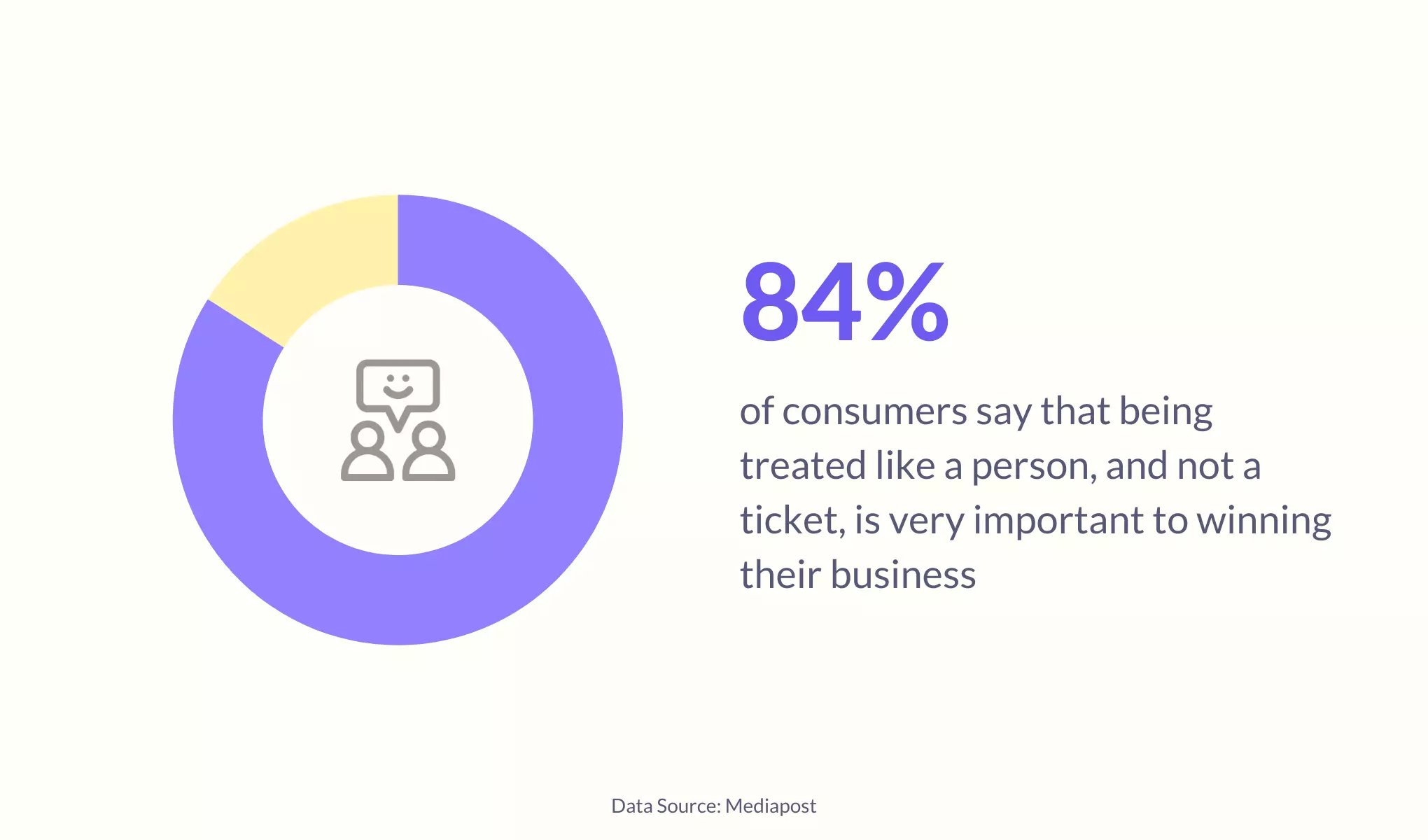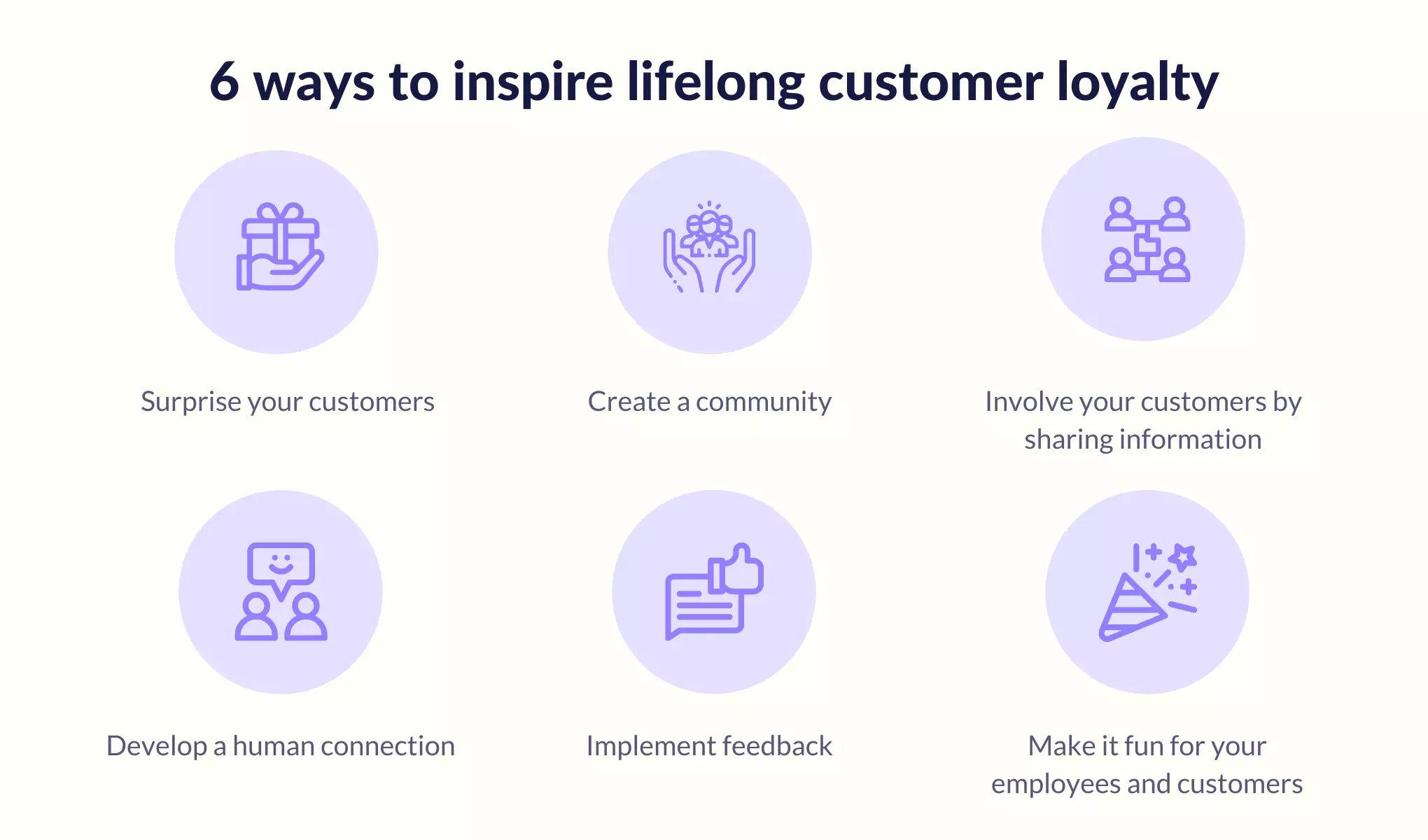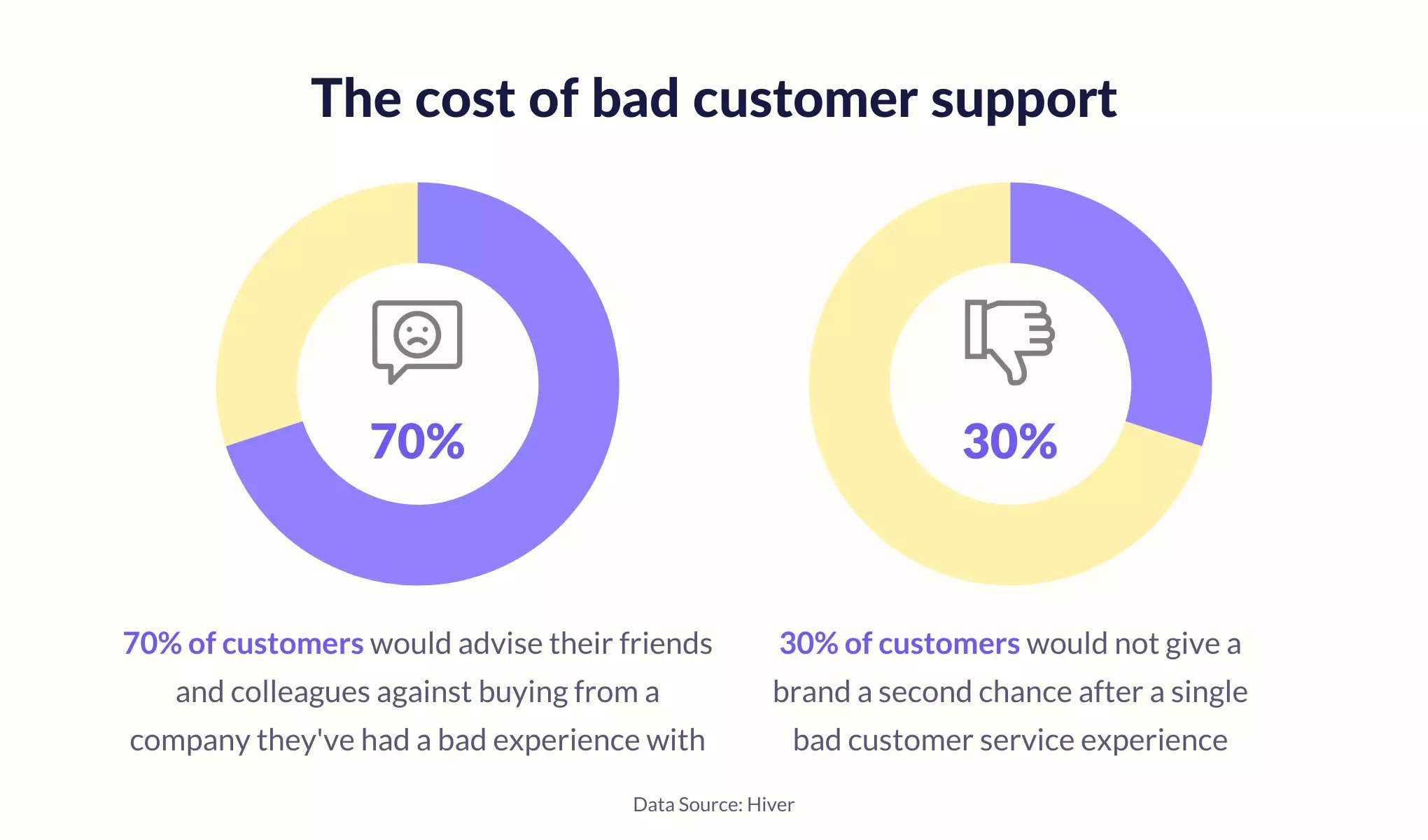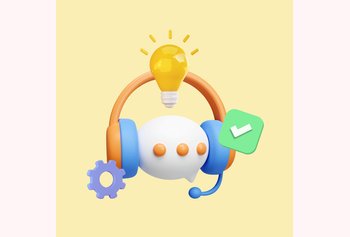Why Customer Service Teams Don’t Need Impersonal “Ticketing”

Table of contents
Customer service ticketing systems are everywhere. From chain restaurants to software companies, from toy manufacturers to high tech, it seems that everyone’s using them and have been for years.
So there must be a reason, right?
You might think that customer service ticketing results in the happiest customers, the most satisfied team members, and the most impressive, bottom-line revenue results for companies, right?
Not really.
Just because ticketing is popular and has been for decades, doesn’t mean that it’s still the best approach today. As a matter of fact, you could say (and we do) that the exact opposite is true.
Let’s look at why — and what companies should be doing instead.
We’ll start where it all began.
Table of Contents
- A brief history of ticketing
- The problems with ticketing
- How ticketing systems get in the way of great CX
- The end of ticketing is here
- Hiver – the human way of doing customer support
- It’s time for the next evolution of email customer service
A brief history of ticketing
Customer service ticketing is a system developed for help desks that allow companies to support customers, partners, and employees more efficiently.
The idea of ticketing was born in 1988 with the birth of the Service Desk Institute (formerly the Help Desk Institute). The theory behind ticketing system software was to streamline customer service by giving users and customers a centralized place to get tech support for questions and problems related to hardware, software, electronic equipment, purchased products and services, and more.
The “ticket” itself is an assigned number that allowed businesses to categorize, track, and route issues to the right people. It’s the digital equivalent of asking a person to take a number while they’re waiting in line at a deli counter.
Soon after ticket management began to take hold, the internet was born, along with email support. (Live chat wouldn’t come along for a couple of decades.)
At the same time, the universality of help desks facilitated the meteoric rise of phone support call centers. The idea was that a live person could handle customer issues more quickly in real-time. But automated “phone trees” quickly grew ever more annoying, frustrating, and complex.
Ticketing promised to solve many of the challenges that support teams typically face, including automating and streamlining workflows while categorizing, prioritizing, assigning, routing, and checking ticket status for tracking customer service issues. It was designed to make teams more productive and efficient, making sure that nothing fell through the cracks, reducing duplicate work, allowing streamlined reporting of key metrics of your team’s performance, and giving companies valuable insight for improvement.
It was an innovation at the time. Customers always knew where to go, with a single point of contact to troubleshoot glitches, get answers to their questions, or solve problems. Customer requests were tracked from the time they were submitted until they were resolved. It was a good idea in theory, but in reality, the system wasn’t very efficient.
As a result, ticketing never really lived up to its intended vision.
The problems with ticketing
With the rise of ticketing, the focus of customer service became more about managing and closing out help desk tickets than it was about relating to and serving the people who submitted them. Essentially, ticketing took people out of the equation.
Consider this typical workflow:
- A customer submits and describes their concern via email and their issue is automatically assigned a ticket number.
- The customer receives an automated message saying their email has been received and (possibly) letting the customer know when they should expect to receive an answer.
- The customer support representative responds to the message, often to gather more information and/or documentation. The ticket is automatically updated.
- The customer responds with the information requested, using the format and procedure required by the system. (For example: “Reply above this line.”)
- Steps 2 and 3 are repeated until the rep can replicate the problem and determine the solution. Delays occur during each of these steps because of the amount of time that it takes people to gather the necessary information and for tickets to work their way through the system queue. Additional delays might occur when customer service reps have to consult specialists within the organization or reroute or escalate issues to an expert.
- The customer service rep suggests solutions and helps users to implement and test them. During this step, it may be necessary to rule out incompatibility issues, third-party causes, etc. Again, there could be several rounds of back and forth discussion, all with possible delays. The ticket is updated each time.
- Finally, the rep will verify the problem is solved and that they can close the ticket (their ultimate goal.)
- Usually, the customer will receive a request to submit a rating/feedback form at this point.

You could have many iterations and variations, but you get the idea. The process is cumbersome and could easily take days or weeks to resolve.
Which begs the question, how can we improve it?
Phone support isn’t the answer. It can be complicated and expensive. Call centers are also often outsourced, which brings its own set of problems. Outsourcing is meant to save money but often doesn’t. Worse yet, call centers may save money but only at the cost of your brand’s reputation.
Training people is expensive if it’s even done well (and often it’s not.) And to top it off, most small businesses still struggle to manage customer communication volume. Have you ever received an automated message like, “Our agents are experiencing unusually high call volume. We apologize for the inconvenience?” or, “Would you like to leave a message and we’ll call you back (in 3-4 hours)?”
Skip ahead to today. Both technology and customer preferences have evolved. Most people prefer to use messaging and email when communicating with companies. Businesses, not so much. Many are still stuck in the technologies and mindsets from 20 years ago.
So not only does a support ticketing system not solve your business’s need for efficiency, but it also doesn’t improve your customers’ experience (CX).
How ticketing systems get in the way of great CX
Times have changed. Ticketing simply doesn’t make sense in today’s business environment. Here’s why:
The software is convoluted
Support ticket systems make everything more complicated than they need to be.
In trying to do every little thing, most ticketing software ends up doing nothing very well. Systems quickly become complicated, unmanageable monoliths with too many workflows. That translates into system — and service — lags.
For customer service reps, system complexity means a whole lot of switching between different screens to gather information and of course, waiting for the system to respond.
In addition, because ticketing systems aren’t naturally intuitive, training becomes a long and arduous process. It’s easier for reps to make mistakes or lose emails because they don’t thoroughly understand the system. It’s frustrating.
To add to the annoyance, ticketing systems are often “black boxes” that don’t interface easily with companies’ shipping, ordering, billing, or other key systems. That also translates into a lot of wasted time, signing on and off different applications.
Finally, responding to repetitive support requests leads to low morale and poor use of support teams’ time.
The systems are inhuman

Ticketing tends to alienate customers, who feel as if they are interacting with robots rather than people.
That’s because being assigned a number is impersonal. And often, workflow automation doesn’t add value. At best, automated messages can make customers feel that their issues aren’t important. At worst, they can irritate people with unnecessary communications, confuse people and create more questions, or even put customers off entirely from dealing with the company.
Ever had to look up past emails in order to “include this number in your correspondence?” Talk about getting irritated!
Finally, support tickets have a one-and-done, throwaway feel. It seems that reps are all rushing to the finish line: “Is your issue resolved? Are you satisfied with the service you’ve received today?” To the customer, it feels like they’ve been turned into a box to be checked, rather than a person who is a valued part of a customer-brand relationship.
The philosophy is outdated
The idea of turning customers into numbers that can then be routed through a production line is rooted in the philosophies prominent during the heydays of manufacturing. The original goal was to transform human questions, concerns, and issues into a digitized packet that could be “processed” by computers. Help desks were designed using the same rationale.
In the 1990s, when project management software, help desk software, and CRMs were slower and less intelligent, ticketing made more sense. But today’s applications are many times faster and much more powerful, backed by machine learning as well as more sophisticated types of AI. We can now collect, store, automate, and analyze much more data, anticipating customers’ needs and preferences and giving personalized recommendations. There’s no longer any reason to hang onto antiquated, assembly-line thinking, and perform repetitive tasks day in and day out.
Instead, what we need now is to put our focus back on the customer and customer experience, to build relationships and loyalty throughout their life cycle.

Innovation is stifled
Ticketing systems don’t promote company-wide information sharing, collaboration or innovation between teams and stakeholders.
Instead, customer service becomes a silo that buffers and excludes key departments from the discussion. Everyone loses the chance to learn, adjust, and improve. Non-customer-facing employees (engineers, technicians, shipping experts, implementation consultants, or others) rarely, if ever, get a chance to talk to customers.
And owing to the manner in which ticketing systems work, customers don’t get to share feedback or submit suggestions for improvement (except maybe through another ticket, that may or may not ever be seen or acted on.). These specialists in turn miss out on valuable insights that could help them to innovate and improve as a result.
In today’s competitive environment, that’s no longer enough. Companies are wisely making customer happiness a top priority — it’s the only way to set your brand apart and drive customer satisfaction. But in order to do that, you must involve everyone in the company in customer service.
And yes, this might mean retooling your entire approach to customer experience.
Fortunately, all of these drawbacks are avoidable. Technology has advanced so that tickets aren’t really needed any longer. The term is simply a holdout from the past, a software limitation that is past its prime.
So what’s the next evolution in customer experience?
The end of ticketing is here
The alternative to ticketing is actually something that we’re all very familiar with:
Conversations.
Just like in real life.
Eliminate those extra steps that convert a simple discussion into a product on an impersonal assembly line and simply talk to people.
In an ideal world, customers want immediate answers to their questions and solutions to their problems. They’re no longer limited to using landline phones or desktop computers mainly during business hours. Instead, they want to use the devices they have in their pockets, anytime it’s convenient for them. They want a streamlined, straightforward way to reach companies and they expect to receive quick responses from people who care.
They especially don’t want to be treated like a number!
As a matter of fact, 89% of customers say that personalized support is extremely important to them. Personalized means they expect customer service reps to have in-depth knowledge of their problems at their fingertips. Customers also expect companies to proactively help them head off common problems, questions, and issues before they occur.
This might be a different philosophy than what you’re used to but think about it.
The nature of business has changed drastically since the days of help desks in the 1990s. E-commerce was already booming pre-pandemic, but in 2020, it exploded. Forbes estimates that the pandemic has accelerated e-commerce growth by 4 to 6 years. Many companies have had to adjust quickly to survive. Those that have seen growth have had to up their customer service game accordingly, especially since 70% of customers would advise their friends and colleagues against buying from a company they’ve had a bad experience with, and 30% of customers would not give a brand a second chance after a single bad customer service experience.
At the same time, consumer buying habits have changed profoundly and permanently. We are not likely to ever return to pre-pandemic “normals.”

The rise in e-commerce isn’t the only big shift companies are adapting to. These days, there’s more emphasis on subscriptions for everything from software to physical products, with a greater focus on long-term relationships and less on single transactions.
But if your brand wants more loyalty, you’ll have to earn it.
Today’s demanding customers expect to interact with real people, and they want the type of service that creates lasting impressions — warm and friendly interactions that leave them feeling like they’ve been heard and that their feedback and their business matter.
Is your current approach to customer service giving your customers what they want?
Hiver – the human way of doing customer support
Moving away from your current complex, inefficient, and dissatisfying help desk ticketing system may be easier than you think.
Hiver is the best customer service software that can help you seamlessly put conversations at the center of everything you do. That’s because Hiver is built specifically to avoid many of the pitfalls and drawbacks of traditional help desk ticketing systems.
It sits right on top of your Gmail and treats emails as conversations — helping you to retain the human connection in all your customer interactions. Your customers and customer support teams will be happier, and you’ll have a stronger foundation for building relationships and brand loyalty. From a backend standpoint, switching also makes sense. Email support with Hiver offers some convincing advantages over ticketing for companies:
- There’s no need to log in to a separate system or navigate many tabs at one time, Hiver’s shared inboxes can be found right inside your Gmail screen.
- It requires no mindset shift around the process of handling emails. You’ll find no annoying system quirks or complicated workflows to remember or work around.
- Unnecessary emails are eliminated from your customer conversations, along with the annoyance and confusion that often accompany them.
- Its live chat functionality lets you serve your customers in real-time without leaving Gmail.
- Hiver email is secure. Your confidential data, as well as your customer data, is safe. The solution is SOC 2, Type II compliant, so you never need to worry about email compliance.
- We are a trusted and certified Google partner. You can rest assured that you’re getting a best-in-class solution that’s continuously improving.
- We provide the best search capabilities on retained emails, using the world’s best search engine with the most accurate results.
Finally, you will see a positive ROI. Oxford Business Group reported 2x faster support and a 100% SLA (Service Level Agreements) completion rate.

It’s time for the next evolution of email customer service
If your company is still limping along, trying to provide excellent customer service with a cumbersome ticketing system, know that you have options.
You can stop apologizing to your customers for system glitches that erase emails and delay responses.
You can say goodbye to slow response times and any of your support team’s frustrations.
You no longer have to bend over backward to make your customer service processes fit awkward system rules.
Learn more here and then contact us to find out how Hiver can help you thrill your customers, build your brand loyalty, and improve your bottom line.

































